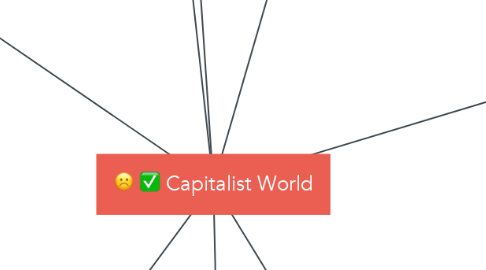
1. Protests
1.1. Protest of 1968
1.1.1. Protest in USA
1.1.1.1. Fight against racial discrimination
1.1.1.1.1. Civil Rights Movement
1.1.1.2. Disagreement about Vietnam War
1.1.1.3. President Johnson approved the minutes of Civil Rights
1.1.2. French May
1.1.2.1. May 2, 1968
1.1.2.2. University of Nanterre
1.1.2.3. Invasion to the Latin neighborhood of Paris.
1.1.2.3.1. Violence
1.1.2.4. May 13, 1968
1.1.2.4.1. Syndicates provoked a general strike
1.1.3. Mexican May
1.1.3.1. October 2, 1968
1.1.3.2. Student manifested during the Olympic Games.
1.1.3.2.1. Soldiers shot them
1.2. Feminism
1.2.1. Universities with women
1.2.2. Autors
1.2.2.1. Simone de Beauvoir( 1949): "El segundo sexo".
1.2.2.2. Betty Friedan (1963): "La mística de la feminidad".
1.2.3. Fourth World Conference of the Women in 1995 by the UN.
1.3. Pacifism
1.3.1. Fear to the Nuclear Holocaust
1.3.2. Bertrand Russell and Albert Einstein
1.3.2.1. 50s movement against nuclear army
1.3.3. 1980 European movement for the nuclear disarmament
1.4. Environmentalism
1.4.1. United State (1971)
1.4.1.1. Greenpeace
1.4.2. 1972 (Club de Roma inform / 1st World Conference about Environment in Stockholm)
1.4.2.1. UNEP (United Nation Environment Programme)
2. European Reconstruction
2.1. Marshall Plan
2.1.1. 1947
2.1.1.1. Tecnical Assistance Plan
2.1.1.1.1. OECD (Organisation for Economic Co-operation and Development)
2.2. Economic recovery
2.2.1. Economic growth
2.2.1.1. Economy diversification + terciarization
2.2.1.1.1. Demografic changes (Migration towards Germany, France and Switzerland)
2.3. Economic Unity
2.3.1. European Council 1949
2.3.1.1. European Coal and Steel Community (ECSC) 1952
2.3.1.1.1. Roma Treaty (Euratom) 1957 (Free transit of people, services, merchandise and money) European Economic Comunity.
3. European politic evolution
3.1. United Kingdom
3.1.1. Winston Churchill is substituded by Clement Attlee.
3.1.2. Silent Revolution
3.1.2.1. Nationalization
3.1.2.2. Increase in taxes
3.1.2.3. Social assistance
3.1.2.4. Education
3.1.2.5. Health
3.1.3. Colonial Empire dissapears
3.1.4. Ulster conflict
3.2. France
3.2.1. Fourth Republic
3.2.2. Algerian War
3.2.3. Fifth Republic
3.2.4. May 68
3.3. Germany
3.3.1. German miracle
3.3.2. Great coalition
3.4. Italy
3.4.1. United government
3.4.2. Christian democracy consolidation
3.4.3. Deterioration of the internal situation
3.4.3.1. Political radicalization
3.4.3.2. Organized Crime
4. Crowd Control Society
4.1. American way of life
4.1.1. The social media starts to grow very fast wth the appearence of the TV.
4.1.2. As the States of wealth were implemented in the country, de middle social class reappered, because of the good economics and jobs.
4.1.3. The whole population got access to the education and culture.
4.1.3.1. The cultural industry starts to promote the cinema and music industries.
4.1.4. The aviary industry is promoted by the introduction of the touristic industry.
4.2. Cultura Juvenil
4.2.1. Generational Conflict
4.2.1.1. The wealth in the new styles of life made the juvenile population to try to revolutionize the american culture
4.2.1.1.1. Individualization and experimentation
4.2.1.1.2. The young population started to use different clothes as they liberate from the customs.
4.2.1.2. Young generations rebel against the government and the politics.
4.2.1.3. Sexual Revolution
4.2.1.3.1. women were introduced to the workforce
4.2.1.4. The appereance of the movie Rebel without a cause
4.2.1.4.1. Different values from WW2
4.2.1.5. The music started to influence the society as they appeared in every social media (radio and TV) and events.
4.2.1.5.1. The music and the singers were iconic in the rebel way of living
5. Keynesian Model
5.1. General Theory of Occupation, Interest and Money
5.1.1. John M. Keynes
5.1.1.1. 1936
5.1.2. Beveridge Report
5.1.2.1. New Social Model
5.1.2.1.1. Increase in public invasement
5.1.2.1.2. Services extension
5.1.2.1.3. New fiscal policy
5.1.2.1.4. Public deficit
5.1.2.1.5. Industry involvement with fascist regimes
5.1.2.1.6. United Kingdom
5.1.3. Aim to avoid the crisis
6. United States
6.1. Harry S. Truman
6.1.1. Fair Deal
6.2. Dwight D. Eisenhower
6.2.1. Containment against Communism
6.2.2. Spacial race against Russia
6.3. Ronald Reagan
6.3.1. Movies
6.3.1.1. He acussed some of actors to be agree with communism , which wasn't true.
6.4. Kennedy
6.4.1. His New Frontier plan retook some of the Roosevelt's ideas.
6.4.2. An increment on the spending in infrastructure and social problems.
6.5. Lyndon B. Johnson
6.5.1. Civilian Rights Law
6.5.1.1. Medicare
6.5.2. Great Society
6.5.2.1. An initiative to fight the poverty
6.5.3. Viertnam War
6.6. Nixon
6.6.1. He had to deal with the economical crisis
6.6.1.1. Dollar devaluation
6.6.1.2. Oil crisis
6.6.2. Watergate
6.6.2.1. A case of spying which involucrated Nixon
7. U.S.A. Consolidation
7.1. Economic leadership
7.1.1. 1941. U.S.A. economy increase rapidly
7.1.1.1. First due to the war
7.1.1.2. Then because of the post-war reconstruction
7.1.1.3. Its GPD became the half of the world total
7.2. New international economic order
7.2.1. 1944.Bretton Woods agreements
7.2.1.1. Convert the dollar into the international reference currency
7.2.1.2. Place USA in the headquarters of the new economic institutions (FMI & BIRD)
7.3. International financial center
7.3.1. Financial center moves to NY
7.3.2. Increased its operations
7.4. Reconstruction of Europe and Japan
7.4.1. USA impulse the economic reconstruction of Japan and Europe
7.4.1.1. US aid was channeled through the Marshall Plan
7.5. Internationalization of its economy
7.5.1. International expansion of companies
7.5.1.1. Which became the top multinationals of the world
7.6. Technological economy
7.6.1. Many european scientists arrive to USA in the war
7.6.2. Increase of productivity
8. Asian Miracle
8.1. Reconstruction of Japan after the democratization and demilitarization.
8.1.1. Dodge Plan in 1949 to stop comunnisim.
8.1.1.1. San Francisco Traity in 1952. Japan gives up territory and the american occupation stops.
8.1.1.1.1. The old companies bought little companies and created a consumism society.
8.2. Asian Tigers
8.2.1. South Corea, Hong Kong, Singapur and Taiwan becomes the Newly Industrialized Countries.
8.2.1.1. Priviligezed by their region or location
8.2.1.1.1. Positive Economic Outcomes because of Exportation

